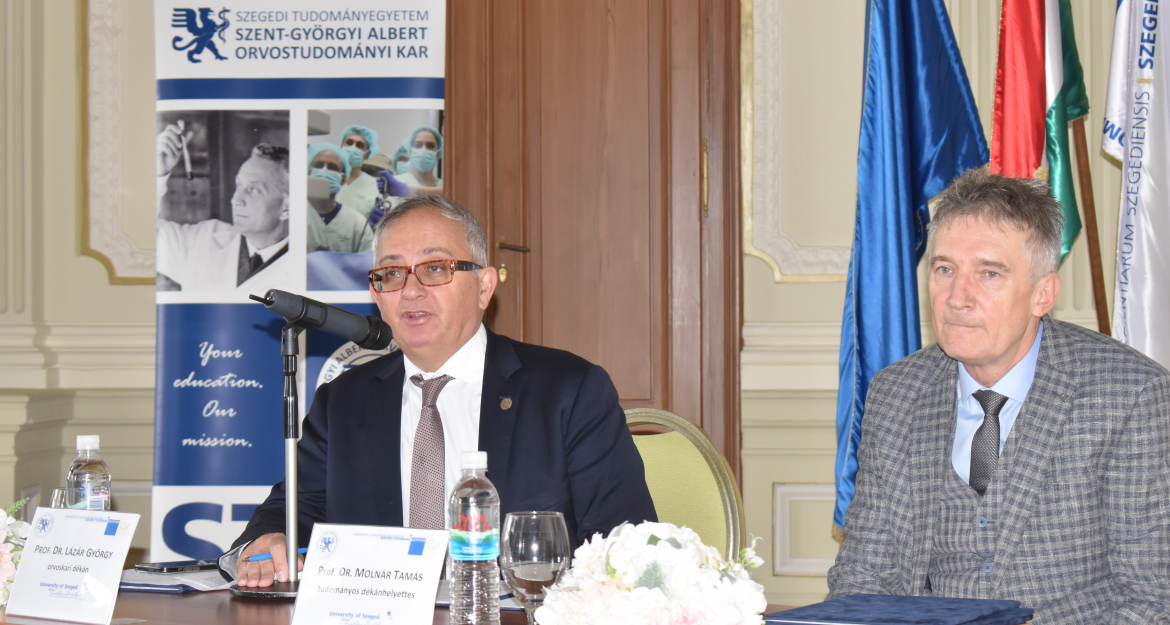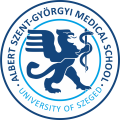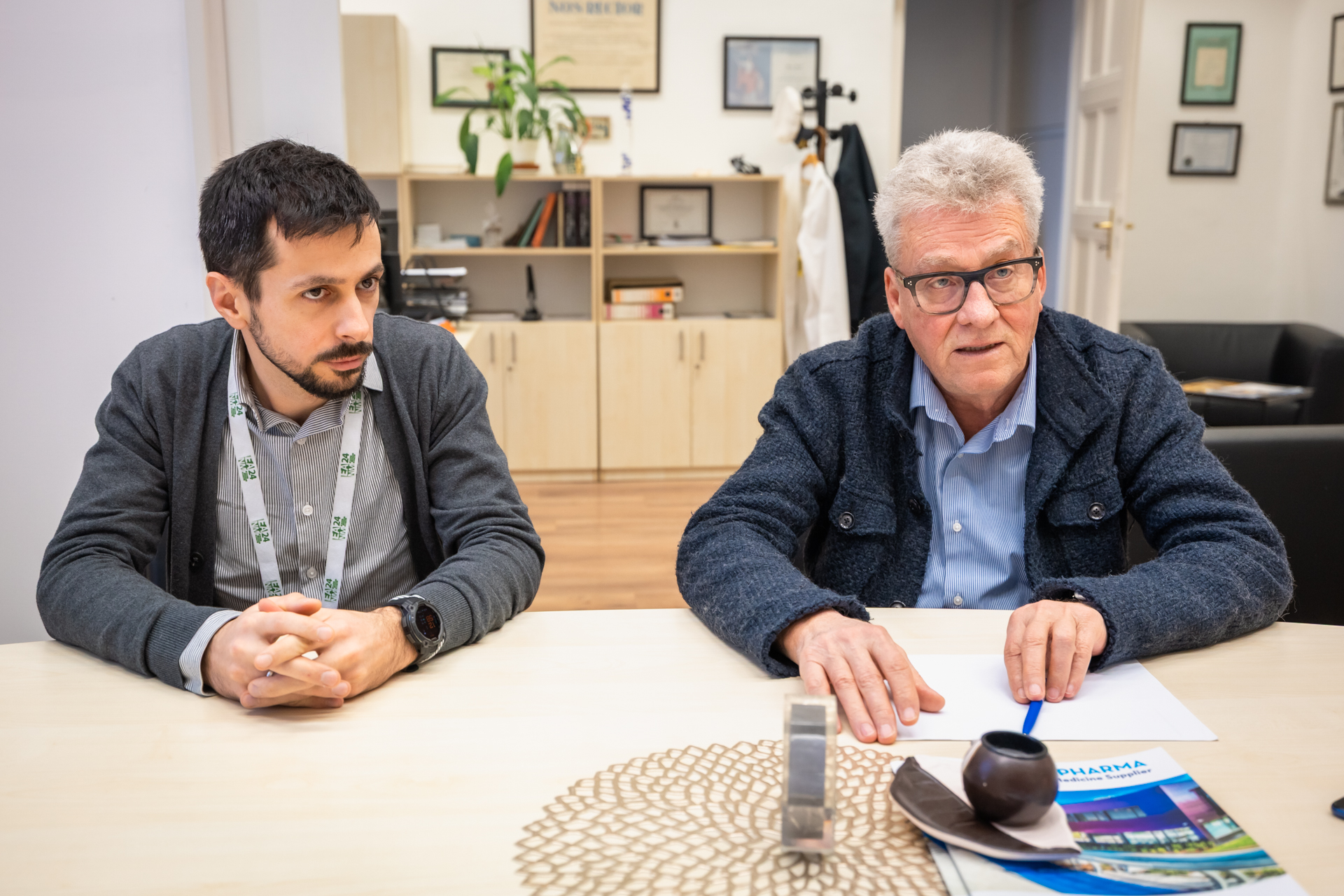University of Szeged
Albert Szent-Györgyi Medical School
Foreign Students' Secretariat
Your Education. Our Mission.

Interview with the Dean and Vice-Dean on faculty science support
According to this year's national ranking of higher education institutions, the Albert Szent-Györgyi Medical School is the best faculty at the University of Szeged.
We talked to our leaders, Prof. Dr. György Lázár, Dean of the Medical School, Prof. Dr. Tamás Molnár, Vice Dean for Scientific Affairs and Dr. József Maléth, Dean's Commissioner for Scientific Affairs about the background of these results.
György Lázár: These data confirm that we are on the right track; we are among the best in the country in terms of both student and teaching excellence.
The number of students applying to the Albert Szent-Györgyi Medical School has remained essentially stable in recent years, and the school continues to be very popular. This is also reflected in the fact that admission score requirements in Szeged are second only to Semmelweis University. This difference in scores between the two medical faculties seems to be melting a little, which indicates that Szeged also attracts very capable and committed students, which is gratifying, as it is much easier and more effective to teach bright and motivated students.
As a result, the Medical School is currently operating at almost full capacity with 235 students enrolled in the Hungarian program and 213 in the English program, which means that the popularity of our English program is unbroken. The number of students in our German program is rising again, which is obviously the result of a great deal of effort on the part of our faculty representatives. As a result, 97 students have enrolled in the German program. This is also related to the fact that the Hungarian Accreditation Committee has accepted the clinical extension of our German program, and German medical students have already started the 4th year of their studies in Szeged this year. In two years' time, the very first German program students will be graduating from Szeged.
In addition to education, academic performance also plays a key role in the reputation of a faculty. How does the Albert Szent-Györgyi Medical School contribute to scientific research and what support does it provide to researchers?
György Lázár: To this end, the Medical School also provides significant financial resources from its own income to improve the conditions of scientific work and to support the human resources strategy for researchers. The grant portfolio of the Medical School provides targeted support for both clinical and basic research, and from this year onwards it also provides a special grant opportunity for young researchers in the form of postdoctoral fellowships. We also support synergies between different disciplines, for example through a collaborative call with the Biological Research Centre in Szeged. Each year, mobility grants support the participation of several colleagues in international conferences and promote the learning of new methods. Through international collaborations, our students and researchers often have the opportunity to work with partners abroad, which further enhances the international visibility of our scientific results. Our key objective is to create the optimal conditions for researchers to conduct innovative and breakthrough research.
Our track record speaks for itself: in the past 5 years we have significantly increased the number of quality publications (D1, Q1 publications) and citations of the Medical School, accounting for 40% of the overall scientific output of the university, thus strengthening the excellence of SZTE.
What role does the Medical School play in the education of young researchers? What support do they receive?
Tamás Molnár: We offer a scholarship programme for our PhD students, which aims to support our talented students during their doctoral training, both financially and in terms of professional mentoring. It is particularly important for us to involve them in research projects from the beginning of their training, so that they can put their theoretical knowledge into practice. Students have the opportunity to join various research groups at the Medical School, where they can build an ever-expanding network of international contacts alongside innovative research methods. The Supplementary PhD Scholarship for PhD students is now in its second year. Last year, we supported 26 students with more than 22 million Forints in funding.
What is the purpose of the postdoctoral research grant, which is inviting applicants for the first time this year?
Tamás Molnár: We would like to provide financial support to our most talented young researchers to start their independent research career.
How does the Medical School improve its research infrastructure?
József Maléth: We are aiming to improve the available research infrastructure in a number of ways. We have a significant budget of HUF 100 million each year to support the work of faculty and researchers by subscribing to a number of journals from our own resources. We strive to update the list of these journals and databases every year to ensure that our researchers have access to the most recent and outstanding publications. To give a few examples, our faculty provides access to the New England Journal of Medicine, the Journal of the American College of Cardiology, Cell Press, and several journals from Science, as well as databases such as the Wolters Kluwer Health Library at Lippincott and the BMJ database. In addition, each year the Medical School launches an Equipment Procurement Plan, which supports the improvement of research infrastructure by funding the purchase of small and medium value equipment. This plan has enabled the purchase of 10-20 instruments per year since 2018, also at a significant annual cost of 50-60 million HUF. The instruments purchased typically allow for the introduction of new methodologies or increase the efficiency of the work of research teams. We also aim to strengthen the exploitation of basic and clinical research at the Medical School by establishing a Translational Medicine Group, which is also a significant infrastructure development. It is hoped that the group will be useful for both basic and clinical research.
What future plans does the Faculty have to support and develop scientific research?
György Lázár: We intend to continue supporting our researchers in the future by developing new infrastructure and by establishing further international collaborations. We will pay particular attention to the involvement and mentoring of young researchers and to promoting international mobility. We also plan to broaden our research areas, with a particular focus on artificial intelligence, digital medicine and biotechnology. We plan to support innovative ideas and research aimed at the creation of intellectual property, and are currently exploring the possibilities for doing so. We want our researchers to use the latest technologies to achieve world-class results that contribute to the advancement of health care.






